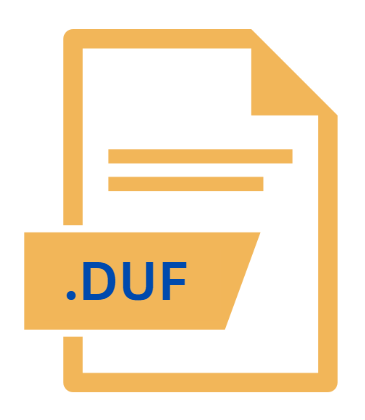.DUF File Extension

DAZ User File
| Developer | DAZ Productions |
| Popularity | |
| Category | 3D Image Files |
| Format | .DUF |
| Cross Platform | Update Soon |
What is an DUF file?
The .DUF file extension stands for DAZ User File, which is primarily associated with DAZ Studio, a 3D modeling and animation software developed by DAZ 3D.
DAZ Studio is known for its extensive library of 3D content and the ability to create complex 3D models, animations, and renders.
The .DUF file type is specifically used to store user-generated data, including settings, poses, and other customizations related to 3D models and scenes within DAZ Studio.
More Information.
DAZ Studio has evolved considerably since its inception. Early versions of DAZ Studio relied on the .DSF (DAZ Studio Scene File) format, which was suitable for basic scene data but lacked some of the advanced features users needed.
With the release of DAZ Studio 4.0, DAZ 3D introduced the .DUF file format to address these limitations.
The .DUF file format was designed to support more complex data structures and provide better integration with DAZ Studio’s advanced features.
Its introduction allowed users to save not only their scenes and models but also a wide range of user-specific settings and customizations.
This made it easier for artists and designers to manage their projects and maintain consistency across different sessions and projects.
Origin Of This File.
The .DUF file extension was introduced by DAZ 3D as part of its effort to enhance the versatility and user-friendliness of DAZ Studio.
The format emerged with the release of DAZ Studio 4.x, which marked a significant upgrade from earlier versions of the software.
The primary goal behind the .DUF file format was to provide a more flexible and efficient way to store user-specific data compared to previous file formats used by DAZ Studio.
File Structure Technical Specification.
The .DUF file format is a text-based format that uses JSON (JavaScript Object Notation) to store data.
JSON is a lightweight data interchange format that is both human-readable and easy for machines to parse and generate. This choice of format contributes to the .DUF file’s flexibility and ease of use.
A typical .DUF file contains a hierarchical structure of data that represents various elements of a DAZ Studio project. This includes information about 3D models, textures, materials, poses, and scene settings.
The use of JSON allows for a clear and organized representation of this data, making it easier to edit and manipulate.
For example, a .DUF file might include sections for:
- Scene Information: Details about the overall scene, such as camera positions and lighting settings.
- Model Data: Information about 3D models used in the scene, including their positions, orientations, and any applied transformations.
- Pose Data: Custom poses and animations applied to models.
- Texture and Material Information: Details about textures and materials applied to 3D models.
The JSON format enables users to modify these settings directly if needed, and DAZ Studio can parse the .DUF files to accurately recreate the saved scene and settings.
How to Convert the File?
Converting .DUF files to other formats is not a straightforward process, as the .DUF format is specifically tailored for DAZ Studio. There are some methods to work with .DUF files in other contexts:
- Within DAZ Studio: DAZ Studio provides built-in functionality to export scenes and models to other formats, such as .OBJ (Wavefront Object) or .FBX (Filmbox). These formats are widely supported by other 3D software and can be used for further editing or rendering.
- Third-Party Tools: Some third-party tools and plugins may offer functionality for converting .DUF files to other formats. These tools can be found within the DAZ 3D community or from independent developers who specialize in 3D content.
- Manual Editing: Since .DUF files are text-based, users with knowledge of JSON and DAZ Studio’s data structure can manually edit the file to extract or modify data. However, this requires a good understanding of the file format and is not always practical for complex projects.
Advantages And Disadvantages.
Advantages:
- Flexibility: The .DUF format’s use of JSON allows for a flexible and extensible structure, making it easy to add new features and data types as DAZ Studio evolves.
- Human-Readable: Since .DUF files are text-based and use JSON, they are relatively easy for users to read and edit manually if needed.
- Compatibility: The .DUF format is designed to work seamlessly with DAZ Studio, ensuring that users can save and load their projects without compatibility issues.
Disadvantages:
- File Size: Depending on the complexity of the scene and the amount of data stored, .DUF files can become quite large, which might impact performance and storage.
- Complexity: While JSON is user-friendly, the hierarchical structure of .DUF files can be complex for users who are not familiar with JSON or the DAZ Studio data model.
- Limited External Use: The .DUF format is primarily designed for use within DAZ Studio, which means that it may not be easily interoperable with other 3D software or tools.
How to Open DUF?
Open In Windows
- Install DAZ Studio: Download and install DAZ Studio from the DAZ 3D website.
- Open DAZ Studio: Launch the application and use the “File” menu to open .DUF files. You can load saved scenes or models directly from within the software.
Open In Linux
- Compatibility: DAZ Studio is not natively available for Linux. Users on Linux systems may need to use compatibility layers such as Wine or virtual machines to run DAZ Studio and work with .DUF files.
Open In MAC
- Install DAZ Studio: Download and install the macOS version of DAZ Studio from the DAZ 3D website.
- Open DAZ Studio: Open the application and use the “File” menu to open .DUF files. The process is similar to the Windows version.












